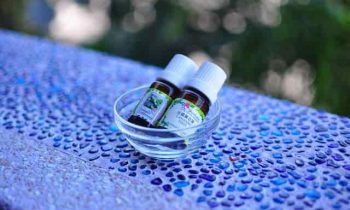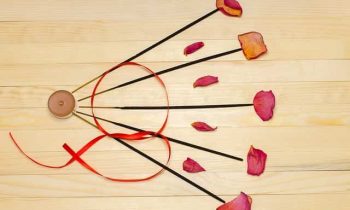Aromatherapy and essential oils go hand-in-hand. They work together to provide substantial, proven health benefits in mind and body. Because so much plant material is used to produce even the smallest amounts of essential oils, the resulting liquid is densely packed with healing power and very volatile.
[adinserter block=”1″]It requires between 50,000 and 60,000 rose blossoms to make just 1 ounce of rose oil. A single pound of lavender essential oil requires 31 to 32 pounds of lavender plant.
This is why essential oils must be diffused with water or diluted with some type of carrier oil before using, in most cases. They are extremely potent, and need to have that potency reduced before you can use them. If you were to apply or ingest essential oils without dilution, they can aggravate, irritate and burn the mouth, digestive tract and skin in many people.
Aromatherapy allows you to harness the healing power of essential oils without suffering from their volatile potency.
In this report on how to get the most out of essential oils, you will learn about the many ways to inhale natural aromas and scents. Diffusing is probably the most common inhalation method of essential oil use, but there are other ways to effectively and safely breathe in essential oils.
You will also discover how to apply essential oils in a dilution to your skin, and the ins and outs of eating and drinking foods and beverages which contain essential oils. We will also cover how to use essential oils “neat”, which means in a direct application to your skin without dilution. This is a process which must be handled correctly, and you should test your skin for a possible reaction before doing so.
Since the healing power of nature doesn’t care if you are old or young, this report will show you how to safely and effectively use essential oils with babies and the elderly to provide health benefits. Finally, the resources section will show you a few websites, books and essential oil products that can continue your aromatherapy education. Before we dig deeper into the subject, let’s get an idea of just what aromatherapy is.
What Is Aromatherapy?
The term “aromatherapy” seems to have a straightforward definition, according to the two root words which make up that term. It is true that aromatherapy uses the aroma of different plant products for therapeutic health benefits. Accordingly, the website Aromatherapy.com gives us the following definition for the word …
Aromatherapy is the practice of using the natural oils extracted from flowers, bark, stems, leaves, roots or other parts of a plant to enhance psychological and physical well-being. The inhaled aroma from these “essential” oils is widely believed to stimulate brain function.
However, inhalation is not the only way that certain natural aromas and scents can benefit your health. You can also consume essential oils when diluted properly, and apply them directly to your skin. Those two methods of using the natural essence of plant material to deliver health benefits are covered later in this report.
Right now, let’s look at the different ways you can inhale essential oils.
Handkerchief, Cloth or Tissue
You can add 2 or 3 drops of an essential oil to a handkerchief, tissue or a small cloth and then inhale the aroma.
Sauna
A ratio of 2 drops of essential oil per 2 cups of water poured onto the sauna heat source allows for inhalation.
Candle Method
You can add essential oil to the melting wax of a candle and inhale the aroma. Don’t worry, essential oils are not flammable.
Diffuser
Diffusers come in different shapes and sizes, can be very simple or boast multiple features, and they force essential oils into your atmosphere via several methods. The 4 main types of essential oil diffusers are as follows:
- Nebulizer
- Evaporative
- Heat
- Ultrasonic
The different types of diffusers each offer advantages and disadvantages, and discovering your personal preference will mean testing different products.
[adinserter block=”2″]Lightbulb Rings
The heat from a lit bulb is used to disperse essential oil aromas into the air.
Boiling Water
Add a few drops of your favorite essential oil to a bowl and fill with boiling water. Cover your head and the bowl with a towel and inhale away.
Electric Pad
Replaceable or reusable pads are heated with electricity, which heats the oil and makes it breathable.


 Safety First with Essential Oils
Safety First with Essential Oils Aromatherapy Equipment Essentials
Aromatherapy Equipment Essentials Aromatherapy – How to Get Started Safely
Aromatherapy – How to Get Started Safely